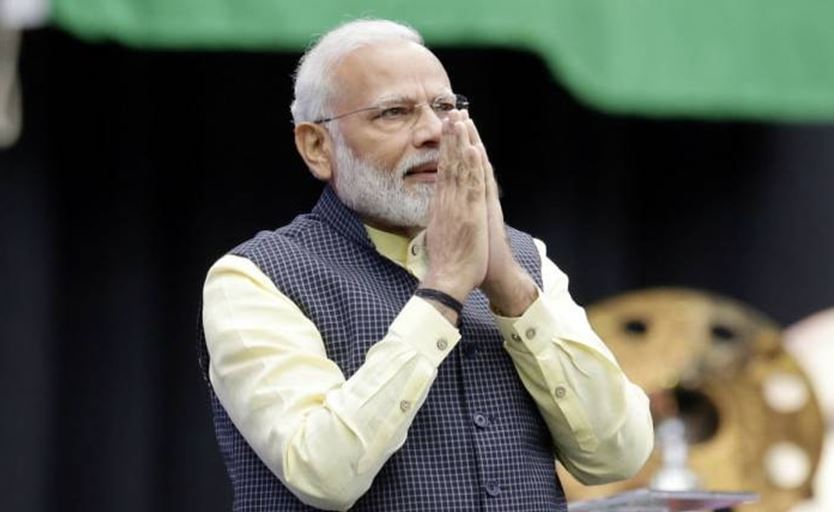India has unveiled a gamechanger in the electricity sector even as the Modi government invited bids to roll out the “One Sun One World One Grid” (OSOWOG) plan. Speaking about the initiative, a government official said, “This is by far one of the most ambitious schemes undertaken by any country and is of global significance in terms of sharing economic benefits.” The ambitious plan has been taken up under the technical assitance program of the World Bank.
With this India is laying down the global strategy in the sector in the midst of the Coronavirus Pandemic. By taking the lead in the Solar sector, and creating a One Grid plan India will be fulfilling the most basic of demands for third world countries- electricity, apart from countering Chinese influence into the African countries and other regions of the world, and laying the foundations for India’s cost-efficient Solar power production.
According to Mint, the Request for Proposal reads, “India’s Prime Minister recently called for connecting solar energy supply across borders, with the mantra of ‘One Sun One World One Grid’ (OSOWOG). The vision behind the OSOWOG mantra is “The Sun Never Sets” and is a constant at some geographical location, globally, at any given point of time.”
The RFP underscores the importance of the grid for three particular regions, and states, “With India at the fulcrum, the solar spectrum can easily be divided into two broad zones viz. far East which would include countries like Myanmar, Vietnam, Thailand, Lao, Cambodia etc. and far West which would cover the Middle East and the Africa Region.”
New Delhi has recognised that saving the third world really starts with giving them electricity. The plan is broadly divided into three phases, and the first phase will cater to the Middle East—South Asia—-South East Asia (MESASEA) to use clean energy sources such as solar for meeting power demand during the peak seasons.
The second phase will involve interconnection of the MESASEA with the African countries, and the final phase will be even more ambitious as it will involve global interconnection.
At the core of this project is India’s intent to provide clean and cost-efficient power supply to third world, electricity deficient countries such as the war-scarred countries in the Middle East- Yemen and Iraq. A number of African economies are also, of course, in need of better power supply.
Amidst the global outrage against China, India sits in a position of renewed importance, yet India is taking steps that will further enhance its goodwill in these parts of the world where it already enjoys a lot of respect and importance.
What the ambitious plan also does is counter China’s “debt trap diplomacy” dubbed the Belt and Road Initiative (BRI). For years, Beijing has burdened the African countries and other parts of the world with unbearable debt under its BRI projects. These heavy-debt projects lead to governments in these countries getting riddled with Chinese influence.
India has no such colonisation ambitions though, and it has come up with a plan to afford power supply to such countries through a common grid, which other global players never really cared about. Prime Minister Modi, on the other hand, will use his first-hand experience of ensuring electricity for all within India.
The Saubhagya scheme to provide electricity to last willing household has been a grand success and PM Modi is going to share the valuable experience with other parts of the world.
While BRI is facing a lot of opposition in the African Continent and other parts of the world, Prime Minister Modi’s ambitious OSOWOG plan is bound to be an instant hit.
With this scheme, India can also carve out a prolific market for itself insofar the Solar power sector is concerned. India produces world’s cheapest solar power in the world, and dependence on Chinese imports for solar cells and modules has also come down drastically. Between April 2017 and March 2019, the imports from China fell sharply from 2.8 billion US dollars to 1.7 billion US dollars. This was a result of the safeguard duties imposed by the Modi government in 2018.
Now, there are prolific market in different parts of the world that are in dire need of cost-efficient power supply. This is an opportunity for India to tap into these markets. With passage of time, India might also become a solar power battery producing hub which will accentuate the long-term benefits that OSOWOG can entail.
India is big player in the Solar power sector and leads the International Solar Alliance which aims to promote solar use globally by mobilising $1 trillion in investments by 2030. And now India is making a massive outreach to ensure that it leads the global strategy in the Solar power sector.
